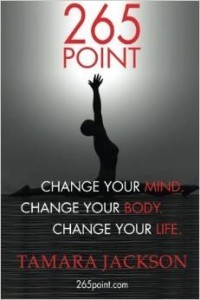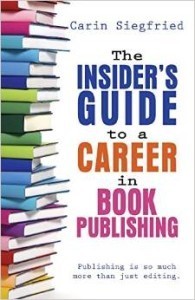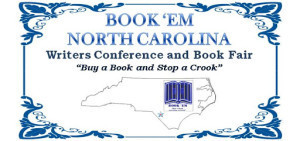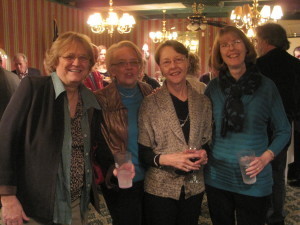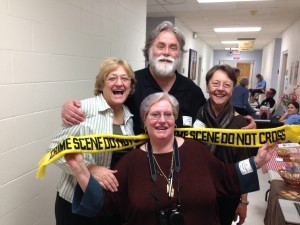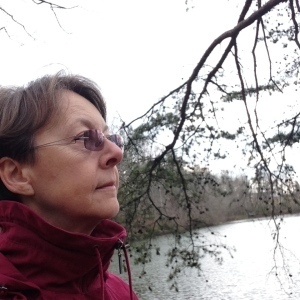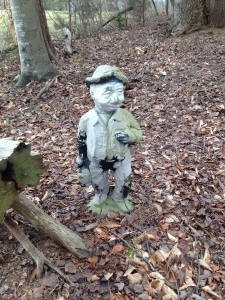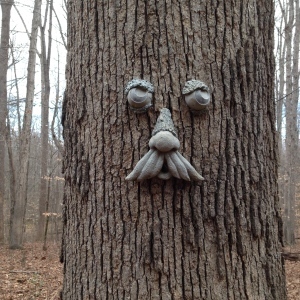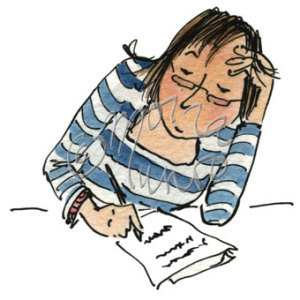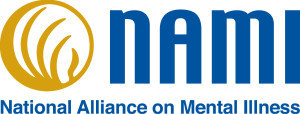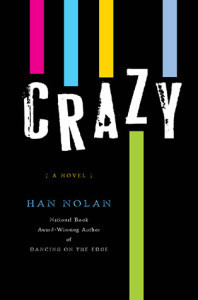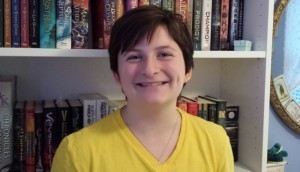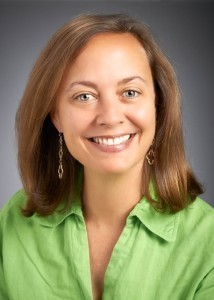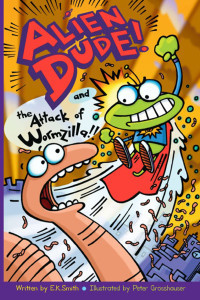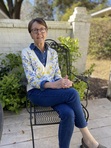Linda Vigen Phillips's Blog, page 3
March 16, 2015
NCRA and Books That Save Lives
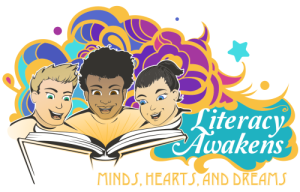 If you are reading this on Monday, I will be in Raleigh at the North Carolina Reading Association Conference, co-presenting a breakout session with Madeleine Kuderick (Kiss of Broken Glass) on the topic “Young Adult Literature Saves Lives.”
If you are reading this on Monday, I will be in Raleigh at the North Carolina Reading Association Conference, co-presenting a breakout session with Madeleine Kuderick (Kiss of Broken Glass) on the topic “Young Adult Literature Saves Lives.”
I’ll talk more about this next week, but for today, a couple of “teaser” slides from our presentation.
THE PROMISE OF BIBLIOTHERAPY
When a teen asks a librarian for “books about anxiety” he means “stories” he can relate to, not clinical studies, according to a recent School Library Journal article.
Teens see themselves in these fictional characters and know that they are not alone.
“I want to see myself in the books I read, and I want others to see themselves represented, too.”
They can speak about tough topics through the safety of these fictional characters.
“Through literature, I am free to say what I want and be who I want to be.”
Quotes taken from recent article “Mental Health and Books: Teenagers Speak Out www.theguardian.com.
*****************************************
THE TAKE-AWAY: INSIGHT AND PROBLEM SOLVING SKILLS
In Crazy, Laura learns to value:
Talking rather than keeping secrets
Finding a creative outlet
Being proactive towards getting better
Naming the beast
In Kiss of Broken Glass, Kenna learns:
That she is not alone
Self-harm can be an addiction
That there are coping strategies –
“937 things to do instead of cutting”
And hope is a powerful thing
Teachers and counselors, we hope you will agree that books like ours can be life-saving conversations starters in the classroom. I hope to share some of your input from today’s presentation on next week’s blog!
Congratulations to Debi Johnson who won Tamar Jackson's book, 265 Point, and Judy Pierce, who won Carin Siegfried's The Insider's Guide to a Career in Book Publishing. Thanks to all who participated.
March 9, 2015
Two books/two give-aways!
On Saturday, March 7 I had the privilege of sharing the spotlight with two power-house authors at the WNBA-Charlotte Authors’ Showcase. Tamara Jackson, a Certified Group Exercise Instructor through the American College of Sports Medicine (ACSM) who has appeared on the Dr. Oz TV show was a tough act to follow!
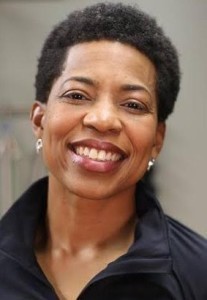 In her book, 265 Point, Tamara shares her heart-wrenching journey from a 265 lb. junk food addict to a 155 lb. fitness fanatic. On her website she says:
In her book, 265 Point, Tamara shares her heart-wrenching journey from a 265 lb. junk food addict to a 155 lb. fitness fanatic. On her website she says:
“265 POINT is a powerful and energizing book that hits the glamorization of the BBW (Big Beautiful Woman) head-on. Tamara advocates that African American women stop embracing this term, understanding that it is a contributing factor to the alarming statistic that four out of five black women are overweight or obese.
265 reveals some touching moments where Jackson endured ridicule and prejudice at her high weight of 265 pounds. Tamara also shares the emotional and environmental challenges often faced in the quest to develop a healthier lifestyle. Women are sometimes sabotaged by their own family and friends who derail their weight loss efforts and criticize their healthier menus. Fueled by a new-found passion for health and fitness, Tamara delivers a realistic plan to reach a healthy weight including a practical food plan and doable exercise regimen.”
I have to add that not only does she talk the talk but she walks the walk! She looks great and exudes abounding energy. This book will encourage anyone struggling with weight and/or health issues, no matter the color of their skin.
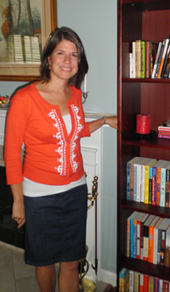 Unfortunately for me, I was wedged in between two authors with national acclaim. Carin Siegfried, former book editor at St. Martin’s Press, runs her own business (creative editorial services) and holds the office of national president of WNBA. She has also found time to share her wisdom in her first book, The Insider’s Guide to a Career in Book Publishing. Here is what she says about her book:
Unfortunately for me, I was wedged in between two authors with national acclaim. Carin Siegfried, former book editor at St. Martin’s Press, runs her own business (creative editorial services) and holds the office of national president of WNBA. She has also found time to share her wisdom in her first book, The Insider’s Guide to a Career in Book Publishing. Here is what she says about her book:
“So you want to work in publishing? Publishing is a hard industry to get into and the first few years involve a lot of work for no pay. Through this book you will gain the information you need to enter the world of books with your eyes wide open.
The vast majority of people who want to go into publishing want to be editors, which is the path with the least pay and most work (at least in the bottom ranks). But do you know what the other jobs in publishing even are? You might be more ideally suited and enjoy working in a completely different department that you’ve never thought of before. This book takes you through all the major career paths in book publishing and explains the advantages and disadvantages of each, so you can match up your personality and skills to find the perfect job for you.”
Carin speaks from years of personal experience, and I would recommend this book to anyone who wants to break into the publishing world or just understand it’s intricate workings better.
If you would like to enter the drawing to win either of these books, leave a message and indicate if you want to try for one or both. Drawing closes this Saturday, March 14.
March 2, 2015
Book ‘Em NC
Gretchen Griffith, Sandra Warren, Linda Phillips, Sarah Norkus
This past weekend I had a great time hanging out with about 75 other authors at a huge book fair at Robeson Community College in Lumberton, called Book ‘Em North Carolina. We gathered at a reception Friday night, where we caught up with old friends and met many new ones.
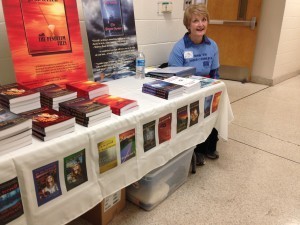 p.m.terrell, suspense author
p.m.terrell, suspense authorSuspense author p.m. terrell and Waynesboro, VA police officer Mark Kearney founded this organization to raise public awareness of the correlation between high illiteracy rates and high crime rates. A portion of the proceeds raised from the event is divided among the Dolly Parton Imagination Library of Robeson County for providing one book a month to children 1-5; Communities in Schools; The Friends of the Robeson County Library for literacy campaigns; and the Lumberton Police Department for their involvement in Reading Across America.
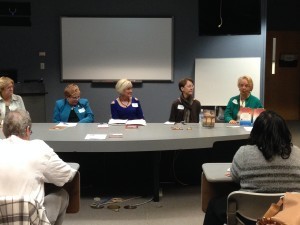 Gretchen, Darlene, Mary Anne, Linda, Sandra
Gretchen, Darlene, Mary Anne, Linda, SandraThe fun at an event like this is multi-layered. Fellow SCBWI friends Gretchen Griffith and Sandra Warren and I joined Mary Anne Benedetto and Darlene Eichler, two teachers of memoir writing, for a well-attended panel discussion on that topic. While Crazy is not a memoir, the fact that it is semi-autobiographical was close enough to make for a lively dialogue.
Gretchen Griffith, Terry Irving, Linda, Sherry Rentschler
And throughout the day, it was kibitz time, all up and down the halls of two floors in this classroom building. While I didn’t get to hear the presentations by the two headliners, Terry Irving, and Terri Reid, Terry delighted us with his political prowess during an impromptu and lively hallway discussion, and Terri agreed to a blog interview down the road to share her extreme success as an Indie bestselling author.
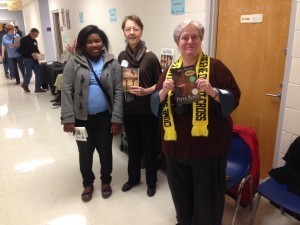 Immanuela, Linda, and Sherry
Immanuela, Linda, and SherryI met a new friend, Sherry Rentschler, who occupied the table next to me, when we discovered we were both Charlotteans and poets. And throughout the day, when we left for lunch or our panel presentations, wonderful student volunteers like Immanuela (whose last name I didn’t get) manned our tables and kept track of our customers.
Now, let’s see……where was I with that second book I am trying to write?
February 23, 2015
A Review of Wild Roses by Deb Caletti
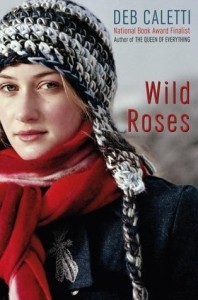 One of the recommended books at the end of the Educator’s Guide that Eerdmans put together for Crazy is Deb Caletti’s Wild Roses. I’ve just gotten around to reading it, and I can appreciate why Eerdmans considers it a companion read to Crazy.
One of the recommended books at the end of the Educator’s Guide that Eerdmans put together for Crazy is Deb Caletti’s Wild Roses. I’ve just gotten around to reading it, and I can appreciate why Eerdmans considers it a companion read to Crazy.
Cassie is a 17-year-old who prefers amateur astronomy to the passions of music. Her musician mother marries a world-famous violinist five days after divorcing Cassie’s father. Dino Cavalli, high-strung, arrogant and increasingly paranoid, is working frantically on new work for an upcoming concert. At the same time, he takes on a poor student, Ian, openly berating him while obsessed with helping him to get into a world-class music school. Ian has doubts about pursuing the intense demands of performance music, but he is under pressure to help out his widowed mother with the family debts.
Cassie’s relationship with Dino has never been stellar, and when she and Ian fall in love, Dino’s rages towards both Cassie and Ian escalate. In the meantime, Cassie’s father, who lives nearby, has discovered that the story Dino has woven about his past is totally fabricated. Cassie’s mother, caught in the middle, hangs on to the hope that Dino will get back on medication after the concert. But far from that, the night of the concert he attacks an innocent man whom he mistakenly thought had been stalking him, and flees the country.
I won’t give away the ending but suffice it to say, it does have a satisfying resolution that surprisingly, doesn’t end in the tragedy that you might expect along the way. Caletti makes observations through Cassie’s eyes throughout the book about famous artists, writers, and musicians, echoing a well-established link between creativity and mental disorders.
As for how Crazy and I can relate? The title itself is taken from one of the last paintings Van Gogh did, titled Wild Roses, and this same artist figures heavily in Laura’s life. Cassie was as intent on hiding Dino’s behavior from the world as Laura was on keeping her mother’s health issues a secret. There was always fear and shame in both protagonists’ lives, and while Cassie did communicate with her mother, she didn’t score as well with Dino or even Ian, the one she loved the most. And in order to survive, both Cassie and Laura developed pursuits that took them away from the family craziness into a world they could control.
I will be presenting two workshops in the next couple of months, based on the theme that “YA books can save lives.” I maintain that reading books that deal with mental illness head on CAN be conversation starters and at best, the lifeline for a teen who is living through a nightmare at home thinking there is no one out there who understands.
February 16, 2015
WRITING RETREAT: A photo-journal
Selfie by the pond (I would have asked the forest elves but they were busy!)
So last week I went off into the woods for a self-styled writing retreat, where I had a lovely, private facility all to myself. Some might say, “weren’t you lonely, or afraid, bored, or distracted by the maddening silence?” I would say, none of the above. I was very aware of being alone, but never lonely; I was surprised momentarily by animal or other sounds unfamiliar to me, but confident my immediate surroundings were safe; I had slack moments, but never once felt bored; and the sounds of silence enabled a floodgate of work on my WIP.
Last week I mentioned that every writing retreat has takeaways. For me, the biggest realization was how hard it is to write this second book. I think Crazy was easier because it is semi-autobiographical and flowed from a well deep inside me. I am having to work harder on the WIP (not directly based on personal experience) which is not a bad thing, just a new-and-different thing. So as part of my frequent breaks, I compiled a little photo-journal. At least, I told myself, if I come down with a bad case of writer’s block, I will have something to show for it.
Every day you can count on a sunrise and a sunset, even if you can’t count a single word you wrote.
Sometimes the sunshine doesn’t produce as much
Writing can be as complex as a labyrinth,
as meandering as a stream,
as gnarly as tree knots,
or just downright messy.
It can be enough to drive you into a hole,
cause you to talk to trees,
or seek shelter in unlikely places.
Savor the new life that springs out of dead leaves.
February 9, 2015
WHEN A WRITER “RETREATS”
As you read this, I am on a four-day self-directed writing retreat, with the goal of taking a stab at finishing my WIP called Batten, about a teenage girl dealing with a devastating disease by that name that has stricken both of her brothers.
Over the course of my writing career, I have attended many retreats or writing workshops. These have ranged widely in length of time, degree of intensity, variety of location, type or style of program, and takeaways. I’ll reminisce about a few in the paragraphs following.
Before I ever thought of getting published, I made annual trips alone and in the company of various ladies’ groups, to an Episcopal convent in Georgia. Many of those visits yielded a number of adult poems that were later published in various literary magazines.
Somewhere around 1998 I went on a beach retreat sponsored by SCBWI, (Society of Children’s Book Writers and Illustrators). It was my first experience with this outstanding organization that has been my writing lifeline ever since. I remember getting encouraging feedback about my writing, but the best outcome of that weekend was eventually meeting Carol Baldwin, the Charlotte critique group leader. We went on to co-facilitate the Charlotte SCBWI conference and become lifelong friends and writing buddies.
In 2009 I attended the Highlights Foundation Writers Workshop at Chautauqua, NY. During that pivotal week, Patti Gauch, former vice president and editor at Philomel Books, helped me rework my rough manuscript, Crazy, from an adult to a YA voice. I soaked up every word Patti said or wrote on my manuscript, and skipped about half the other presentations so I would have plenty of material to show her throughout that intense week. I owe a debt of gratitude to Patti to this day, because I’m sure her editing and confidence in me made all the difference towards the eventual publication of Crazy.
In October 2012 Lorin Oberweger brought her Free Expressions workshop to Charlotte, called Your Best Book. I took a middle grade novel that was finished but left both me and my critiquers unsatisfied. During the course of that week, I decided to abandon that novel and start over (it now rests quietly in a bottom drawer). And, in between sessions, two offers on Crazy came through via email, one of which was Eerdmans. In spite of all the blood pressure spikes, I learned more about world-building and digging deeper into characters and scenes than I ever had before.
Rebecca Petruck (Steering Toward Normal) presented her plot workshop to a small group of writers in 2013, and it was there that I discovered I can use plot charts and I would probably benefit from using them, but alas, in the end, I will always and forever be a pantster! And if that makes no sense to you, well, I advise you to put one of these workshops at the top of your list.
So, I tell you all this to drive home the point that writers need workshops and retreats on a regular basis, and that part of the fun is taking away something, or many things, that you might never have envisioned beforehand.
It is in that spirit that I am at a recently discovered gem of a retreat center near Statesville, NC (not a regular writers’ center so email me if you are interested) and hoping the muse will strike hard during this self-imposed crunch week.
AND, if you are reading this you have discovered I have a brand, spanking new website and I would LOVE your feedback!! New features include being able to search the blogs by category, tag, or month, and checking out where I’ve been (archives) as well as where I’m going. I hope YOU keep track of it, because honestly, some days I wonder both where I’m going and where I’ve been, ha!
February 2, 2015
Getting to Know NAMI
I had the pleasure of signing my book and being a guest at NAMI’s informational meeting, “Get to Know NAMI” Saturday. It was an impressive gathering of national, state, and local officers, doctors and representatives from the medical field, a few politicians, and very appreciative and engaged members of the community. Many of the participants were members of Alpha Lambda Omega Chapter of Alpha Kappa Alpha Sorority, which has recently joined forces with NAMI here in Charlotte.
The energy in the room was palpable as various speakers mapped out the aggressive agenda this organization has set for itself in 2015. Many of the speakers as well as those individuals who stopped at my table were there because somehow their lives had been touched by mental illness. These were survival stories, either because they or someone they loved had taken the necessary steps to understand a particular mental disorder and pursue a course of treatment.
NAMI, formed in 1979, has been the avenue of education and support for millions of people since its inception. It defines itself this way on its website: NAMI, the National Alliance on Mental Illness is a non-profit, grassroots, self-help support and advocacy organization of consumers, families, and friends of people with severe mental illnesses such as schizophrenia, major depression, bipolar disorder (manic-depression), PTSD (post traumatic stress disorder), obsessive-compulsive disorder, borderline personality disorder and anxiety disorders.
My life growing up with a mother with mental illness may have gone differently had there been a NAMI back in the sixties. I survived in spite of it, and now I would like to use my book and my time to pay back. I will be looking into the many programs this organization offers in our community, and I hope that somehow Crazy and I may be useful.
As promised last week, I’ve included below a suggested reading list of YA books dealing with mental illness. If you have a favorite book not on this list, please feel free to chime in.
I put the list in alphabetical order, and you’ll notice the three Crazy‘s. Two people confronted me about my title at NAMI, and rightfully so (at least until they’ve read it), as they are undertaking a campaign to rid the word “crazy” from the language of mental illness. I was told I would eventually run into this conversation. I’d welcome a healthy discussion on the topic!
A SUGGESTED LIST OF YA BOOKS DEALING WITH MENTAL ILLNESS
Crazy by Han Nolan ( mental illness of father of teen male)
Crazy by Linda Vigen Phillips (mental illness of mother of female teen)
Crazy by Amy Reed (bipolar female teen)
Dancing on the Edge by Han Nolan (teen girl experiencing mental illness)
Freaks Like Us by Susan Vaught (schizophrenic teen male)
Hold Still by Nina LaCour (female teen suicide/depression)
The Impossible Knife of Memory by Laurie Halse Anderson (female teen’s father with PTSD)
Impulse by Ellen Hopkins (three teens after suicide attempts)
It’s Kind of a Funny Story by Ned Vizzini (depression in teen male)
The Nature of Jade by Deb Caletti (panic attacks and anxiety in teen female)
Running for My Life by Ann Gonzalez (mother’s schizophrenia)
Schizo by Nic Sheff (male teen schizophrenic)
Sure Signs of Crazy by Karen Harrington (mental illness of mom of teen girl)
Wild Awake by Hilary T. Smith (manic episodes in female teen)
Wild Roses by Deb Coletti (mental illness of girl’s step-father)
Will Grayson, Will Grayson by John Green and David Levithan (male teen depression)
Wintergirls by Laurie Halse Anderson (eating disorders in females)
January 26, 2015
Han Nolan’s Crazy
I knew there were other books out there titled Crazy and so did my publisher, Eerdmans. When it came time to solidify the title for my book, the duplication didn’t seem to be an issue. For whatever reason, I didn’t get around to reading Han Nolan’s Crazy until just recently, and I think that worked out for the best, as well.
Nolan is a national book award winner (Dancing on the Edge) and finalist (Send Me Down a Miracle). I think that information might have seemed daunting and intimidating to me early on, but today, when I finished her Crazy, I felt good about some of the parallels in our books. Don’t get me wrong. I’m not implying my book is national book award material. I’m just saying, I think we may have made some similar points coming at it from totally different points of view, and as far as advocating for better mental health goes, that’s all good.
Nolan’s protagonist, Jason, is a 15-year-old (same as my Laura) who is desperately trying to care for a mentally ill father, after the recent death of his mother. In his isolation from the rest of the world, Jason relies on voices of imagined characters to guide him through the challenges he faces. (To a lesser degree, Laura is haunted by voices in her head, as well). His life is sliding drastically downhill when the school psychologist hooks him up with a lunchtime support group of three other students in various stages of family dysfunction. When Jason’s father goes missing, the three jump in with genuine concern and quickly become Jason’s new and only friends. (Laura has a group of friends with whom she doesn’t confide, but who give her unwitting support).
Jason finds solace and a new strength when he begins to confide in his three new friends. Laura experiences the same thing, surprisingly not with her best friend, but with a persistent and compassionate boy and an artist who becomes a mother-figure.
Shelby, one of the three friends with whom Jason has a mutual attraction, reports Jason’s situation to the authorities who remove him to a foster home. (Laura gets “removed” to her aunt’s house for a period of time).
When insurance dictates that Jason’s father must be released from the hospital for a couple of months before a care-facility can take him, and a judge orders Jason not be involved in his father’s care, Jason reacts. He convinces his caseworker to request a hearing, at which Jason states his case that he can maintain his grades and visit his father daily to assure continuity until permanent care can be arranged. He wins. (Laura goes digging, and doesn’t stop until she has discovered the truth that empowers her to go on with her life.)
Jason is finally able to express his true feelings to his dad, and so does Laura with her mom. In both cases, the exercise proved to be largely lost on the parents, but a means of release and healing for the protagonists.
I loved that both Jason and Laura stayed intact, in spite of the odds against them. I loved that they both had it within themselves to speak out and fight for what they thought was right. I loved that responsible adults recognized their efforts and acknowledged them as credible human beings, NOT crazy offspring of crazy parents.
In a given year, one in four adults experiences mental illness, and approximately 20% of youth ages 13 to 18 experience a severe mental disorder. There is still a stigma and an aura of secrecy attached to these illnesses. Bibliotherapy–the use of books as therapy in the treatment of mental or psychological disorders–can be a lifeline to teens who feel trapped and powerless in the face of mental illness.
I’m currently compiling a list of such books which I will post next week. Readers, I would love to hear about books on this topic that have been meaningful to you.
****************
Hey READERS, I would love to hear from you.
Is your MIND FULL of old thoughts or new?
January 19, 2015
Meet Sydney Crawford, One Prolific and Teen-acious Teen
Today my special guest is Sydney Crawford, better known in literary circles as Sydney Dreamweaver. She is currently working on her fifth book (yes, I did say FIFTH) at the ripe old age of fourteen. You won’t want to leave your seats for this interview with one amazing Teen-acious Teen. Her first book, Blindfolded, An Im Agine Novel, was published when she was twelve, followed by two more, The Mermaid’s Daughter and A Ghostly Murder the same year. Her fourth book, The Timekeeper’s Son was published the following year, and number five is in the works.
LP: Sydney, we all want to know how a 14-year old gets into the writing business so quickly and prolifically! Tell us when and how it all started.
SC: Well, I really realized I loved to write in fourth grade, but I’ve written way before that. My stories were cute little stories about unicorns teaming up with dragons to save the day—a lot of cute little fantasy stories. The first one I finished was about a mermaid, in fact. I was shy at first to let anyone else read them, but after finishing Blindfolded: An Im Agine Novel, I let my grandmother read it and edit it. I wrote that one out long hand like I had with other stories, but after months of slowly and painstakingly transferring it to a word document, we decided that I should type them up every time.
LP: You must have started reading at an early age. What types of books do you enjoy most now? Can you name a few of the best books you have read and why?
SC: I know I was really young when I first began to read, but I can’t remember the certain time. It was a natural thing when I was younger. Once I started to read, I just couldn’t stop because reading was so much fun! It’s really hard to pick favorites, but I really like Fantasy and Science-Fiction, like Percy Jackson or Divergent. Fantasy and Science Fiction are really my favorite genres because everything can be blended, and it’s super fun to see how others can twist the laws of nature.
LP: Since you are a student with regular homework, when or how do you find time to write books?
SC: I write whenever I can, and whenever I feel the inspiration. I don’t have a lot of homework to do at home because most of it I do during school, but if I do have homework the writing has to wait, even if it’s an itching feeling. Weekends, breaks and summer are when I like to write the most, where I can curl up on my bed or at my desk and just type whatever I can.
LP: What publishing process are you using? Is someone helping you navigate all the steps in the process (editing, proof-reading, covers, marketing, etc.)?
SC: I’m self-published, and my grandmother and I are a team when it comes to getting a book out there. I usually do all the customization stuff myself (the cover, the blurb, the “about the author,” and of course, the writing) while she does all the other stuff (editing, proofreading, marketing, and especially finances). It’s really great to have her next to me through this process, because if she didn’t help me, I wouldn’t be where I am now.
LP: Without going into detail, are you satisfied with what your books are earning? Are you saving the earnings for a special purpose?
SC: I’m satisfied with just the knowledge that my books are out there. The money is fine, of course, but I’m into writing for the fun and excitement of telling stories. All the money is being saved up for something special, probably college when I’m eighteen.
LP: Do you have time for other activities? if so, can you name some and a few details about your favorites outside of writing?
SC: I like to draw, and I guess I’m pretty good at it. I’m pestered to put my artwork into my books, but I don’t think I’ve hit that point in my art yet. I also play some videogames (not full-on, just stuff like Mario Kart or whatever) and I read. I hang with my friends as well, and the girls in my neighborhood kind of share my interests but kind of don’t at the same time. That’s good, I guess, because everyone sharing my interests would be boring after a while. I am involved in my church youth group, which also provides lots of opportunity for service.
LP: I understand that you are attending Early College. Tell us a little about how that came about and what it is like.
SC: Early College is a half-high school half-college sort of deal. It’s all free, and only eighty kids get accepted each year. It’s amazing for me to have been accepted, out of the more than three hundred kids who applied. The core subjects (Math, English, Science, and History) are all sped up in a way. I took the first few core subjects last semester and I’m taking the ones after it this semester. The school wants our core classes out of the way so we can start taking our college classes, with like, actual college professors and people. Freshmen only take one college class, Gym (I, for one, was not a fan), and then it starts to expand after sophomore year into what major you’re going into. After four or five years, you’ll be able to graduate with enough credits for an associate’s degree. Oh, and most of the high school classes are in trailers.
LP: Can you share a few things that you have learned about the writing process along the way? Does writing get easier as you become more prolific? How has your writing changed from the first book to the most recent one you are working on?
SC: Well, I’ve learned a lot of things about writing these past couple of years. I’ve definitely gotten more descriptive and have put more action and subplots into my novels, and I’ve actually finished them. Writing isn’t as easy as you’d think it would be. I sometimes find myself staring at a blank page before slamming my forehead on my desk multiple times because of a dreaded thing called writers block. NaNoWriMo (National Novel Writing Month) has helped me manage to make the first draft of the first novel I’ll be publishing this year, and thank goodness for that. Looking back from Blindfolded to now, I can definitely say that they’ve gotten more intense (is that the right word?) as far as story, plot, description, and especially cliffhangers.
LP: Thanks so much for giving us your time today, Sydney, and we wish you continued success in your writing career. Readers, you can find Sydney on Facebook as Sydney Dreamweaver, Twitter @SDreamweaver, and on Instagram as Syd Dreamweaver Official. Her books are available on Amazon and Barnes and Noble, as well as Sweat Repeats and More in Waxhaw.
****************
Hey READERS, I would love to hear from you.
Is your MIND FULL of old thoughts or new?
January 12, 2015
Author Beth Smith Has Created An Alien Dude
Recently I had the pleasure of meeting Beth Smith at not one, but two different author signing events. I enjoyed picking her brain about the path of self-publishing she has chosen, and I asked her if she would share some of her thoughts about writing and her debut novel, Alien Dude and the Attack of Wormzilla.
“Zany black, white and gray cartoon illustrations and a fast paced, humor and action packed narrative keep Alien Dude! readers on the edges of their seats throughout. In a fabulous plot with interest enhanced by such devices as yucky worms, farts, morphing, and general grossness of a high index, Alien Dude! and the Attack of Wormzilla!! is sure to hook and sustain readers age 6-8 and up.” —Midwest Book Review
LP: Thanks for joining us today, Beth. As a former teacher and a mom of a reluctant reader, you have formed some definite ideas about what is missing in the reading market for this population. Can you explain?
BS: When I was teaching, I couldn’t find good “boy” books for my beginning readers. Most of the books at the beginning level were too “baby.” Struggling readers, especially, couldn’t find books to motivate them to read. They were too mature for the books at their reading level. They wanted to read books that their peers were reading like Captain Underpants and Diary of a Wimpy Kid.
LP: How did your teaching experience influence your motivation to become a writer of easy-reader books?
BS: I loved teaching reading. As a first and second grade teacher, I needed easy books that had chapters and numerous plots to use with my guided reading groups. It was hard to teach critical thinking skills like inferring and predicting with short, simple books. So now I am not only writing easy books with chapters and multiple problems and solutions, but I am writing lesson plans to go with them.
LP: Tell us how Zip Line Publishing evolved and why you and your husband, Michael, were motivated to start this venture?
BS: When my husband Michael left his job of seven years, he had some free time at home. At that point, he started to get things rolling. I had already written three stories, but had never been able to find the time to do anything about it. Then, when Michael went back to work, I finished my year of teaching and left my full-time job to publish the books.
LP: Tell us about the inspiration for Alien Dude and the Attack of Wormzilla and how you see the proposed 10-book series evolving.
BS: I had a different name for the main character. His name was going to be Shade Farley. My son, Lake (then age 10) was not thrilled with the name, so I asked for his input. He came up with “Alien Dude.” He also came up with the title, Alien Dude and the Attack of Wormzilla. When I wrote the story, I wanted to write about gross “boy” stuff. I thought a morphing alien, a giant worm and a school infested with smaller worms would be perfect. I hope to continue writing the next eight books over the next three or four years. I would also like to see some sort of Alien Dude animation online and possibly in e-books. Eventually, we would like to publish activity books and curriculum guides to go with the series.
LP: Who is your illustrator, and how did that relationship develop?
BS: Peter Grosshauser is my illustrator. I found some great illustrators from the Internet and let the kids in the neighborhood vote on their favorite artist. Peter won! He lives in Arizona so we have never met in person, but we talk on the phone a lot.
LP: I understand you sought the input of both of your children in the creation of your book. Tell us about that.
BS: There are two parts in the first book that were completely written by Lake. Originally, Alien Dude was going to sing and dance to get the attention of the worms. Lake said that wasn’t “boy” enough. He insisted that I change it to “farting” instead of singing and dancing. I was unsure at first, but went ahead and took his advice! Lake also changed the ending. Originally, the worms were going to eat too much and that was that. Instead, Lake suggested that the worms explode. So they did, and Alien Dude went back to school with worm guts on his face. My daughter, Sterling (then 15) helped me more with my website, changing and copying code.
LP: You have had occasion to do numerous school visits. Can you share some of the most gratifying experiences you have had in the classrooms?
BS: I miss teaching so it is nice to be back in the “classroom.” I incorporate learning objectives and classroom management strategies from my teaching days, then I hand the kids back to their teachers. I recently went to a school and it was “Dress as Your Favorite Book Character Day.” One of the kids was dressed as Alien Dude. Made my day!
LP: What advice do you have for those who are choosing the self-published route? Do you have plans to continue in this vein, or would you ever consider crossing over into “traditional publishing?”
BS: The current plan is to stick to self-publishing. My advice is to read, read, read! And join publishing organizations. There is so much advice out there that has helped us along the way. I didn’t realize how much time it would take and how long. Be prepared to spend a few hours a day to publicize your book and yourself, if possible. We call bookstores, libraries, schools, and publications constantly to plan visits and to publicize the books. It’s a lot of fun, but a lot of work!
LP: I wish you every success in your future writing, Beth. Readers, you can follow Beth’s Facebook page listed under E.K. Smith.

